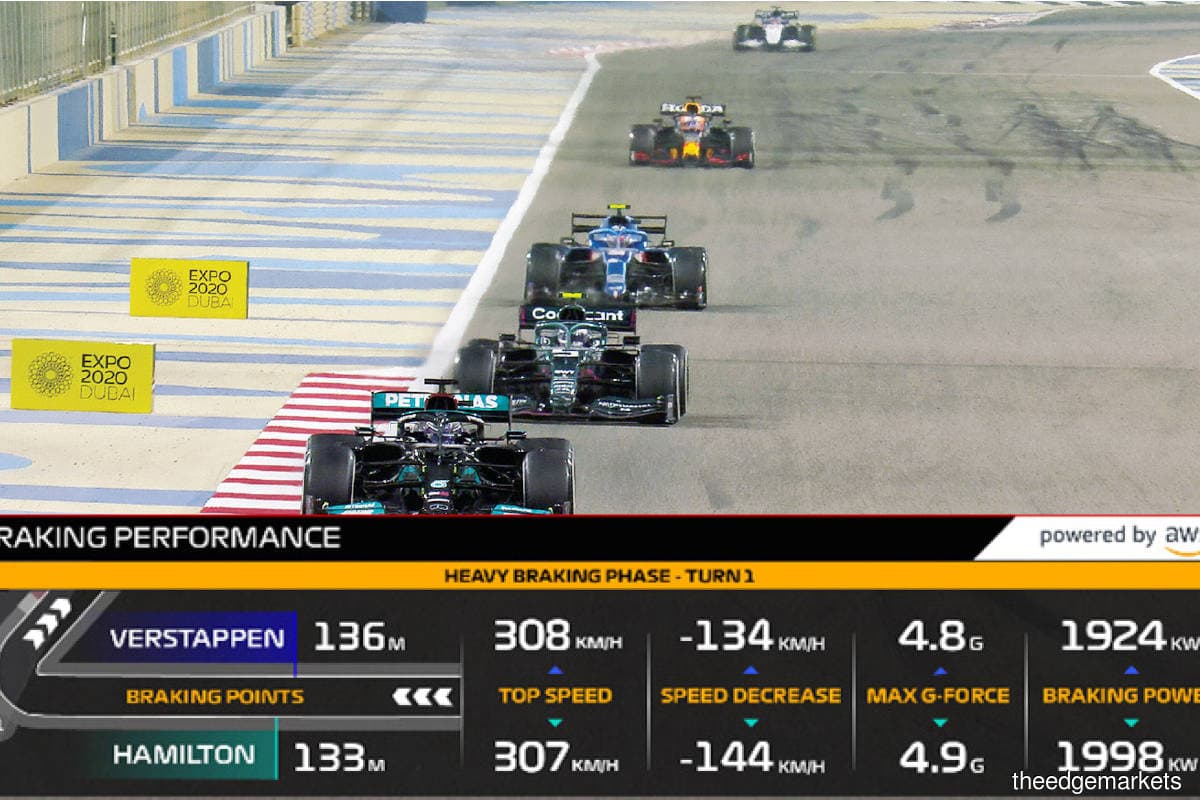
This article first appeared in Digital Edge, The Edge Malaysia Weekly on July 26, 2021 - August 1, 2021
Formula 1 (F1), the globally popular motorsport franchise, is counting on a slew of high-end race and driver analytics to keep the sport engaging for its increasingly digital fan base.
According to Rob Smedley, director of data systems at F1, the franchise has rolled out 14 F1 Insights to date. The latest of these are the Braking Performance and Driver Performance metrics, which went live in the current 2021 season.
These metrics will be delivered to viewers across the world, both on television mediums and F1’s digital platform, F1TV. The rollout is hosted and supported by Amazon Web Services (AWS), the e-commerce giant’s cloud platform.
“The whole philosophy of these graphics is to give the F1 fan more insights into racing than ever before,” says Smedley.
The move comes as the franchise’s worldwide TV viewership plunged in recent years, according to January 2020 reporting by Forbes.
Having said that, Smedley reaffirms F1’s commitment to its broadcast partners and the traditional TV model, adding that the franchise has enjoyed a surge in popularity on digital mediums.
“Our fan base is growing rapidly, and we are therefore looking at many other models of fan engagement from a live-event point of view.
“This is normal for a sport with the incredible reach of F1, which in turn gives us a hugely diverse fan base, where each demographic will want something slightly different. We are meeting this challenge as we look to not only fully enhance the traditional experience but also develop and introduce leading innovations to engage newer audiences,” he continues.
“These new insights peel back additional layers of strategies and use advanced visualisations to make racing even more understandable and exciting. Existing fans get a deeper look at the data and the sport they love, while new fans get help in better understanding the sport.
“These insights will help fans understand the split-second decisions and race strategies made by drivers or teams that can dramatically affect a race outcome. The insights offer us a way to take the fan, step by step, through what are otherwise complex and opaque events.”
According to Smedley, the 300 sensors on each car, generating more than 1,500 individual pieces of race information per second, make F1 a truly data-driven sport.
Battle Forecast (another F1 Insights metric), for example, uses AWS’ machine learning and data analytics to give the audience unique insights into driver battles as they develop during the race, he adds.
Braking Performance, meanwhile, shows how a driver’s braking style going into a corner might give him the upper hand on the exit.
“When executed well, braking optimises a car’s speed, enabling the driver to gain a better lap time. This stat displays and compares drivers’ braking styles and performance by measuring how closely they approach the apex of a corner before braking.
“In addition, it shows the key performance metrics that lead to how the car and driver perform together when cornering, such as top speed on approach, speed decrease through braking, the braking power (kWh) utilised, and the immense G-forces drivers undergo while braking,” says Smedley.
Save by subscribing to us for your print and/or digital copy.
P/S: The Edge is also available on Apple's AppStore and Androids' Google Play.